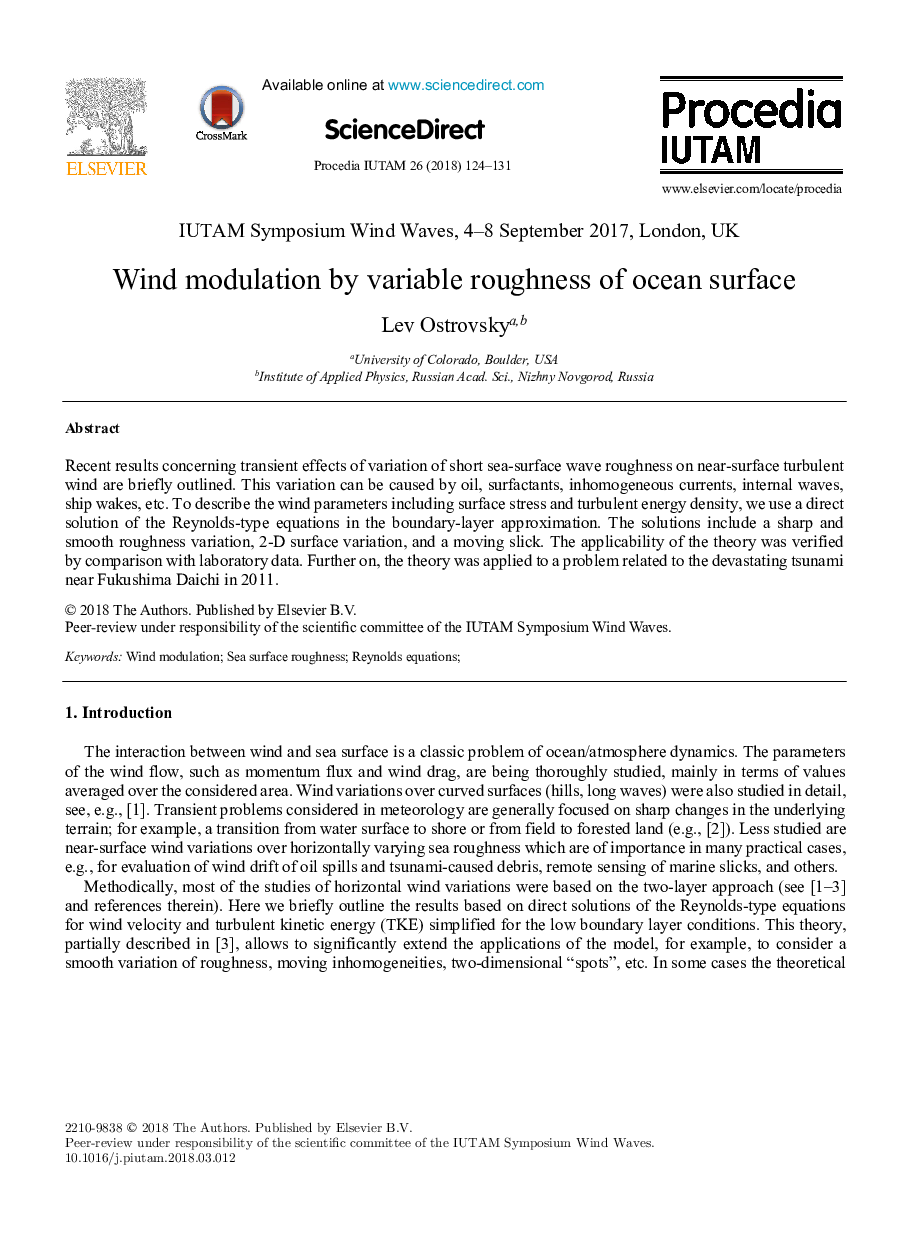| Article ID | Journal | Published Year | Pages | File Type |
|---|---|---|---|---|
| 7228261 | Procedia IUTAM | 2018 | 8 Pages |
Abstract
Recent results concerning transient effects of variation of short sea-surface wave roughness on near-surface turbulent wind are briefly outlined. This variation can be caused by oil, surfactants, inhomogeneous currents, internal waves, ship wakes, etc. To describe the wind parameters including surface stress and turbulent energy density, we use a direct solution of the Reynolds-type equations in the boundary-layer approximation. The solutions include a sharp and smooth roughness variation, 2-D surface variation, and a moving slick. The applicability of the theory was verified by comparison with laboratory data. Further on, the theory was applied to a problem related to the devastating tsunami near Fukushima Daichi in 2011.
Related Topics
Physical Sciences and Engineering
Engineering
Engineering (General)
Authors
Lev Ostrovsky,
